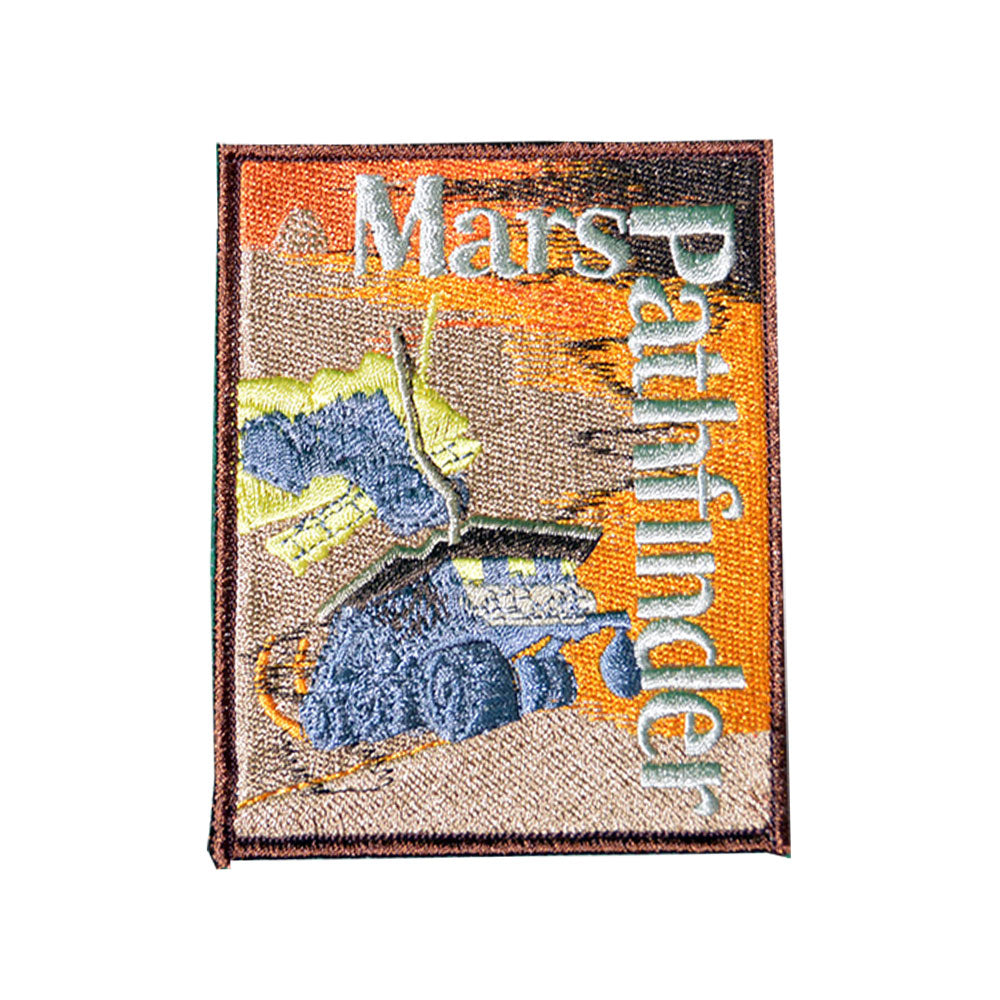
Mars Pathfinder Patch
Mars Pathfinder Patch
Mission Type: Rover: “Sojourner”
Launch: December 4, 1996 UTC
Launch Vehicle: Delta II
Launch Location: Cape Canaveral Air Force Station, Florida
Landing: July 4, 1997
Landing Site: Ares Vallis, Mars
End of Mission: September 27, 1997
Overview
Mars Pathfinder was launched December 4, 1996 and landed on Mars’ Ares Vallis on July 4, 1997. It was designed as a technology demonstration of a new way to deliver an instrumented lander and the first-ever robotic rover to the surface of the red planet. Pathfinder not only accomplished this goal but also returned an unprecedented amount of data and outlived its primary design life.
Both the lander and the 23-pound (10.6 kilogram) rover carried instruments for scientific observations and to provide engineering data on the new technologies being demonstrated. Included were scientific instruments to analyze the Martian atmosphere, climate, geology and the composition of its rocks and soil. Mars Pathfinder used an innovative method of directly entering the Martian atmosphere, assisted by a parachute to slow its descent through the thin Martian atmosphere and a giant system of airbags to cushion the impact.
Top Mars Pathfinder Science Findings
Rounded pebbles and cobbles at the landing site, and other observations, suggested conglomerates that formed in running water during a warmer past in which liquid water was stable.
Radio tracking of Mars Pathfinder provided a precise measure of the lander’s location and Mars’ pole of rotation. The measurements suggested that the radius of the planet’s central metallic core is greater than 800 miles (1,300 kilometers) but less than roughly 1,250 miles (2,000 kilometers).
Airborne dust is magnetic, and its characteristics suggest the magnetic mineral is maghemite, a very magnetic form of iron oxide, which may have been freeze-dried on the particles as a stain or cement. An active water cycle in the past may have leached out the iron from materials in the crust.
Dust devils were seen and frequently measured by temperature, wind and pressure sensors. Observations suggested that these gusts are a mechanism for mixing dust into the atmosphere.
Early morning water ice clouds were seen in the lower atmosphere.
Abrupt temperature fluctuations were recorded in the morning, suggesting that the atmosphere is warmed by the planet’s surface, with heat convected upward in small eddies.

